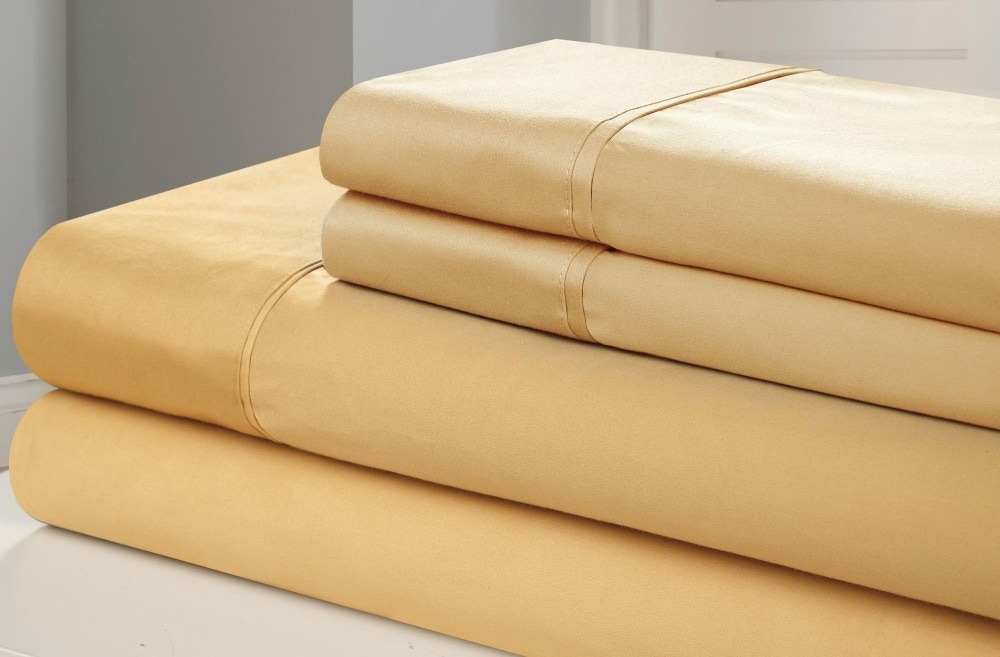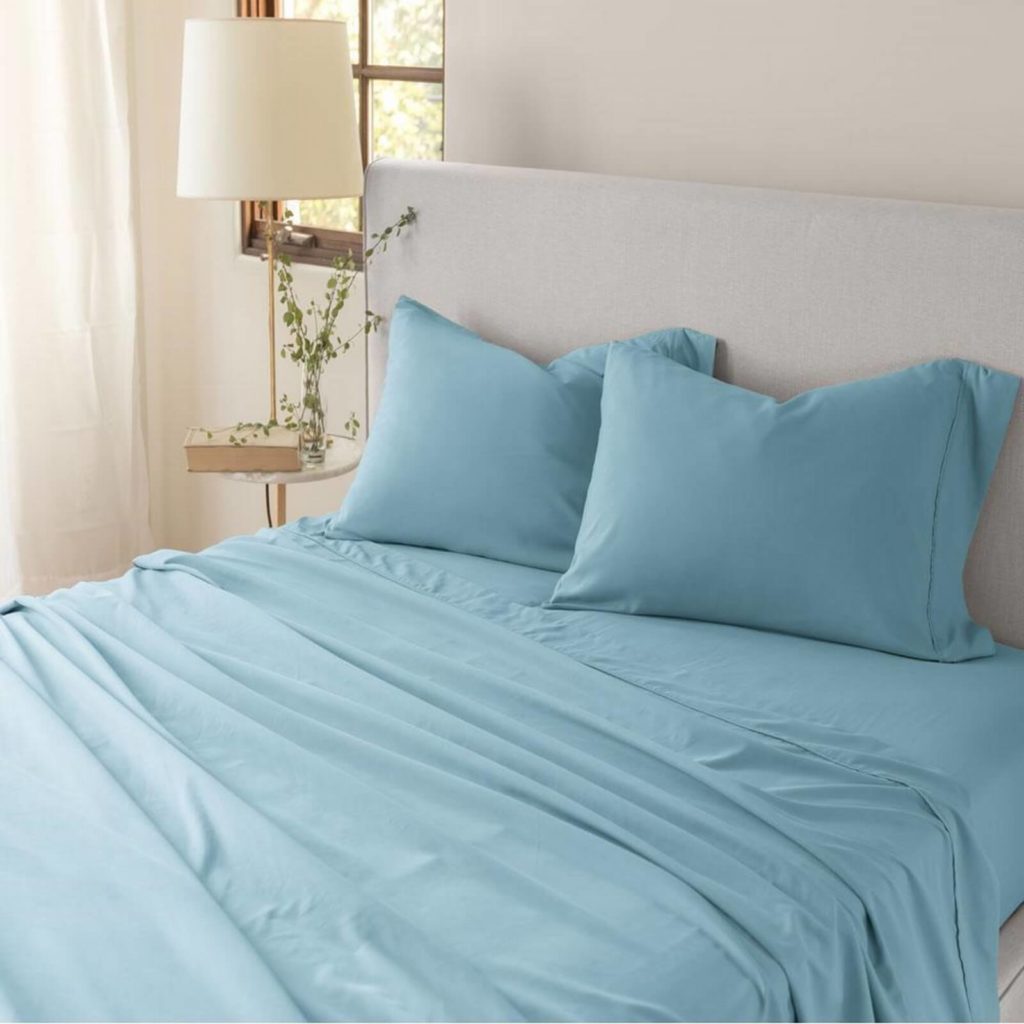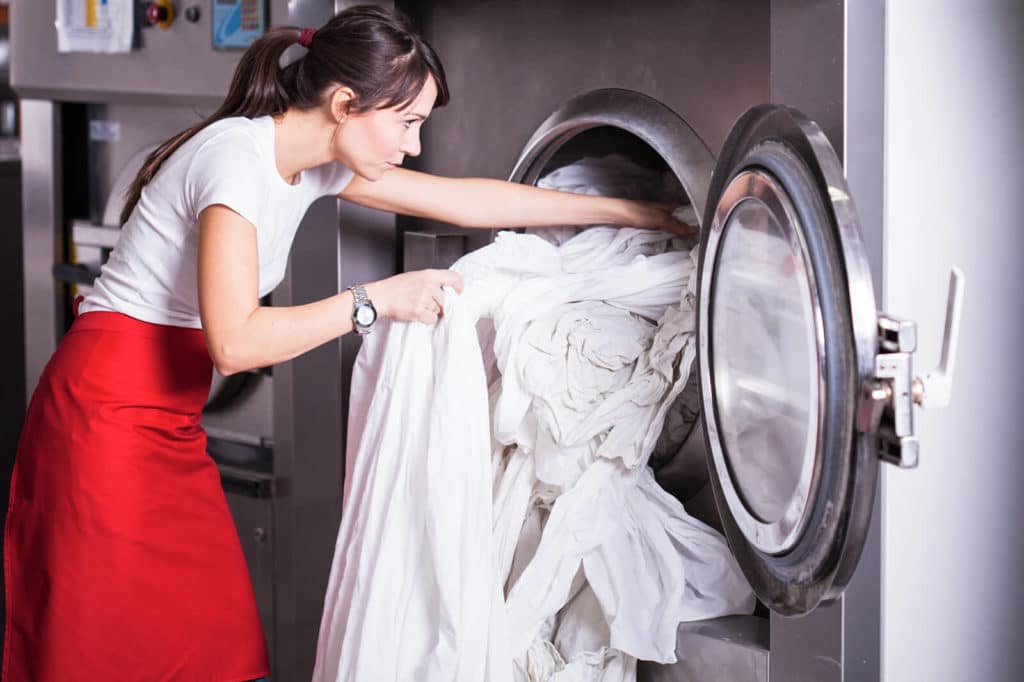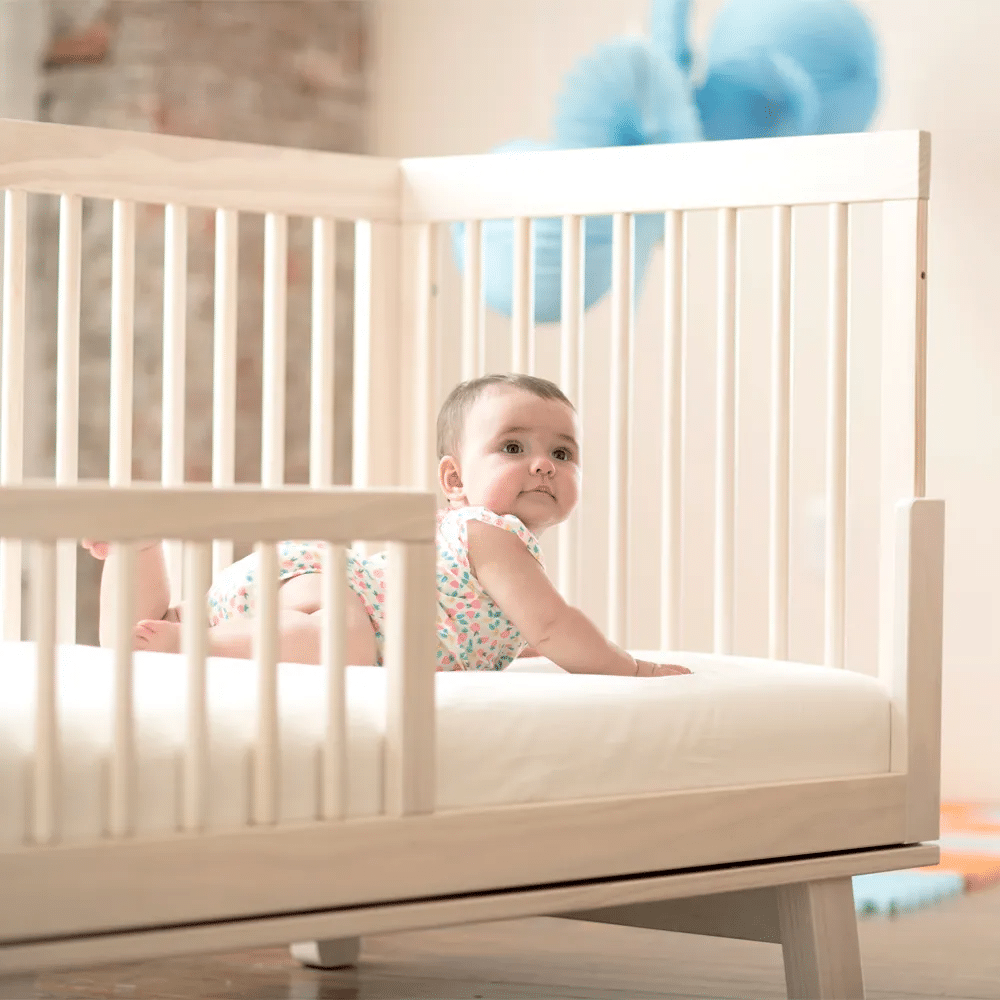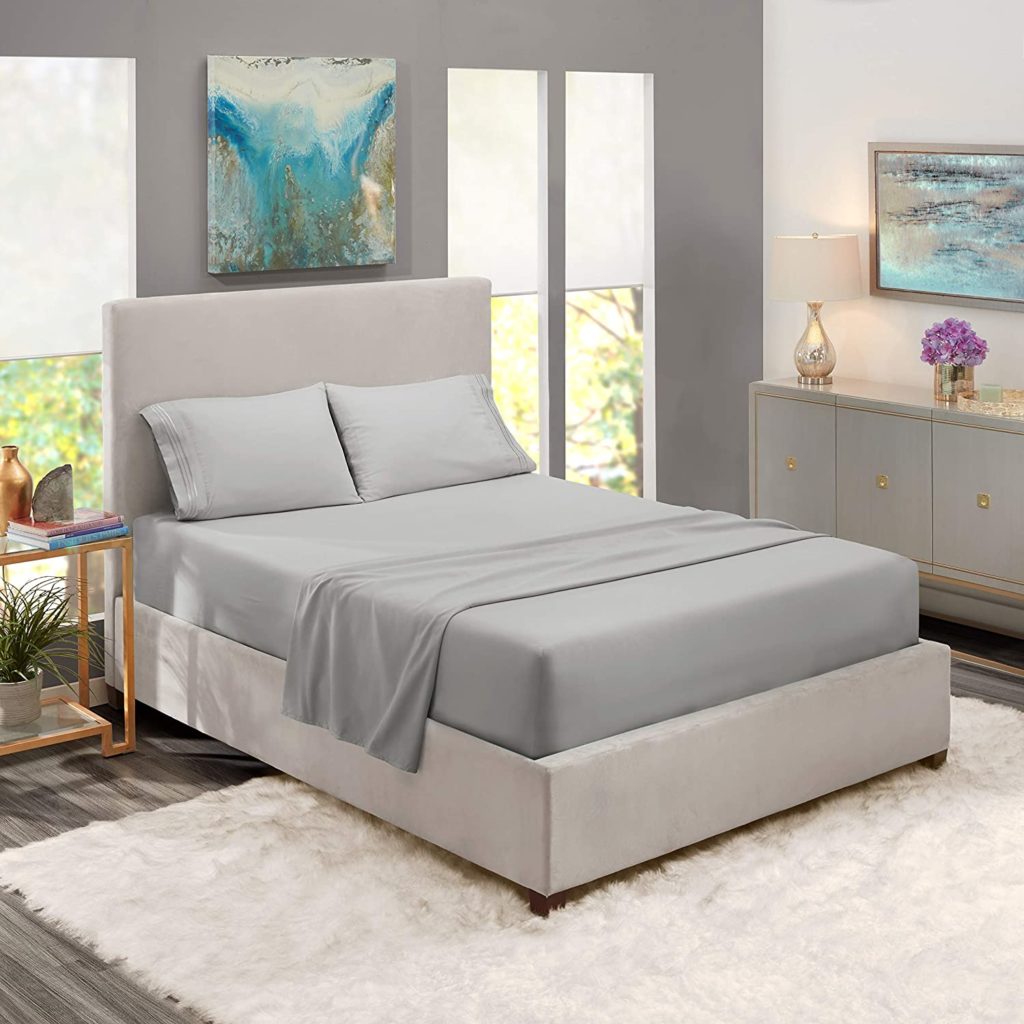

For new or soon-to-be parents, it can be overwhelming to figure out all the items your baby will need and in what quantity. One of the questions you would likely have in mind is “How many crib sheets do I need?” If you factor in the mess that babies often create, then you know that one sheet would not be enough, but to know the right number to buy, there are other factors that come into play. We are going to discuss them at length in this article so you can determine what would work in your situation.
When the “how many crib sheets do I need?” question comes up, the answers will vary according to how often you do laundry, whether you use a swaddle and, of course, your budget. Read on for more information that will help you make an informed decision.
Babies spend most of their time sleeping and it is important to make sure that the crib is safe, clean and comfortable. One of the ways you can achieve this is by ensuring you have extra sheets to instantly replace a soiled one. In this guide, we will discuss all the factors you should keep in mind when determining how many sets of crib sheets your baby will need. We will also recommend what to look for when shopping for a crib sheet.
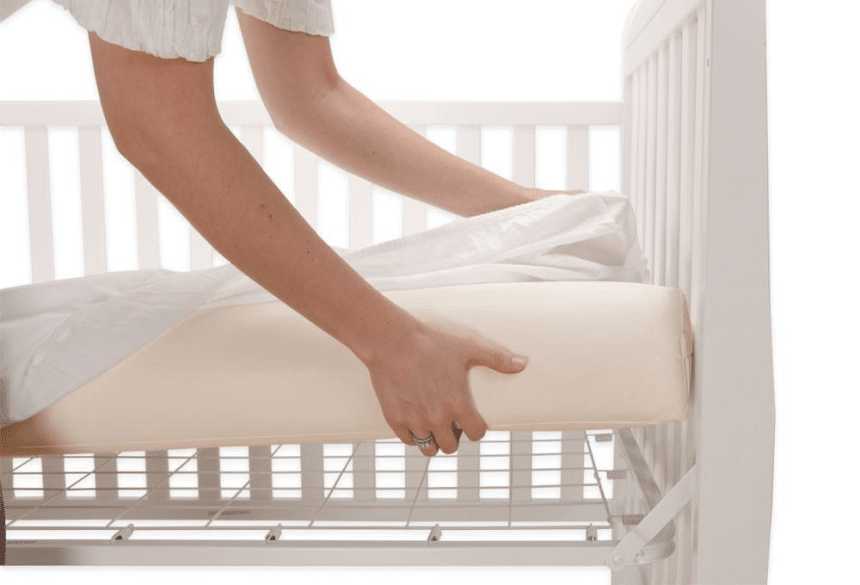
If you are using other protective materials that prevent the crib sheet from coming into direct contact with any mess your baby will create, then you can change the sheet weekly, just as you would do with your bed sheet. In this case, two sheets would suffice. However, if you will be changing the crib sheet daily, then we recommend that you buy a minimum of four sheets so you can always have a clean one available. Some parents opt for seven crib sheets for greater assurance, and the good thing is that you can purchase a set of them at an affordable cost.
To recap, the “how many sets of crib sheets do i need?” question will depend on how often you plan on changing them, bearing in mind how unpredictable babies can be. You want to be prepared for any sort of emergency to ensure your baby has a clean and dry sleeping surface.
Crib sheets are available in varied patterns and colors that you can choose to complement other beddings and the nursery’s décor. You can buy them individually or in packs.
As well as style, you also need to consider the type of fabric used to make the crib sheet. Babies have delicate skin which could be easily scratched by a rough sheet. They are also prone to allergies since their immune system is not fully developed. This is why you should confirm that the material is soft and hypoallergenic when choosing the sets of crib sheets you need to limit irritation, rashes and other skin reactions. A cushy crib sheet will help to induce your little one to sleep and a hypoallergenic one will prevent the accumulation of dust mites and other allergens.
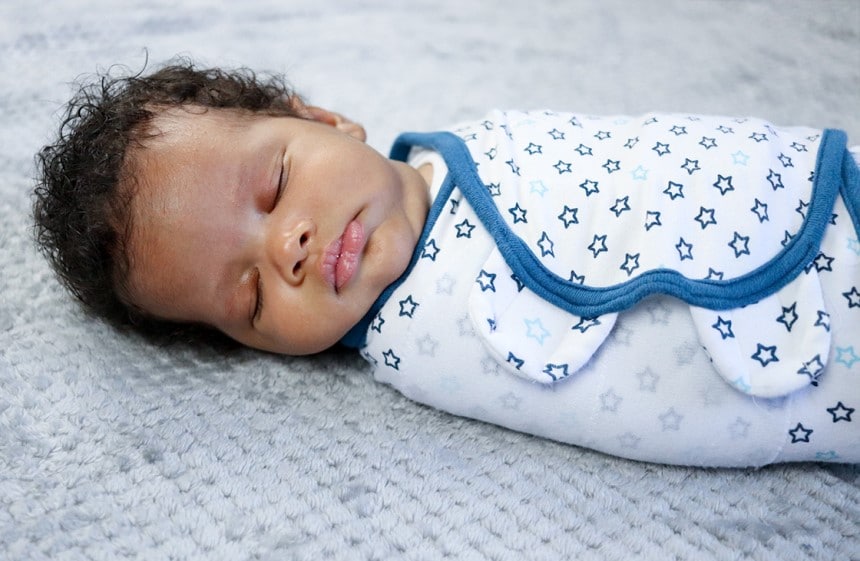
Since swaddles keep the baby in one position, there is little chance of any mess seeping through the swaddle into the crib sheet. A swaddle will keep the crib sheet clean by preventing direct contact with stains, sweat and leaking diapers; instead of changing the sheets daily, you can have two crib sheets to alternate after every three days, or even weekly.
You can replace a dirty crib sheet with a clean one if you have two of them. Unfortunately, there may come a time when both of them will be dirty considering the messy nature of babies.
Compared to adults, babies are also likely to get sick due to their underdeveloped immune system, and they become messier when ill. There is the possibility of them sweating more than usual and soiling their crib sheets while sleeping. For this reason, you would have peace of mind if you invested in at least four crib sheets that you can change more than once a day if the situation calls for it.
Another reason to change crib sheets regularly is because dirty sheets can harbor allergens and other harmful microorganism that could infect babies or re-infect them as they recover in the crib. Having extra sheets will give you more time to take care of the baby instead of worrying whether there is a clean sheet available for emergency cases.
Earlier on our “how many sets of crib sheets do I need?” guide, we mentioned how important it is to buy a soft, hypoallergenic sheet that will not cause hypersensitive reactions or scrape your baby’s skin through friction. Below we will look at other key features that are just as important to consider before making your purchase.
Breathability
Newborns spend plenty of time sleeping on their backs because their movement is limited. This causes them to get hot and sweat a lot. To keep your baby cool and promote better sleep, the crib sheet should be breathable to allow for superior air circulation and heat dispersion. We recommend organic cotton because it is soft and great at airflow.
Snug fit
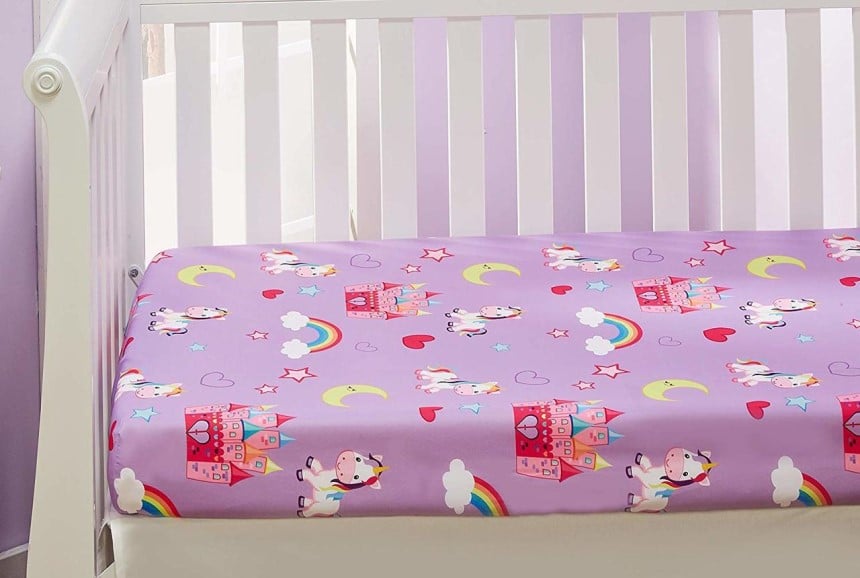
Safety being something that every parent wants for their child, it is important to buy a sheet that fits around the crib mattress.
To identify the correct size that will fit the mattress you have, you need to know the different sizes available for crib sheets.
The best crib sheets feature all-round elastic that fits snugly on the mattress and secures the sheet so it does not loosen or bunch up. A tight-fitting sheet will also protect your mattress pad.
As a safety precaution, avoid placing items such as stuffed toys, thick quilts, bumper pads and pillows in a crib because your baby may not be able to move them away if they restrict breathing. You may, however, place a baby pillow; it fits around a baby’s head to avoid flat-head syndrome and it is perforated to promote airflow. Baby pillows feature a curved design similar to a pregnancy pillow.
Easy to clean
The best crib sheets are machine washable and dryer safe for convenient cleaning. Clean up any mess as soon as it occurs to avoid stains setting in and making it difficult to remove them. When cleaning crib sheets, separate them from other clothes and avoid using harsh detergents that might irritate the baby’s skin.
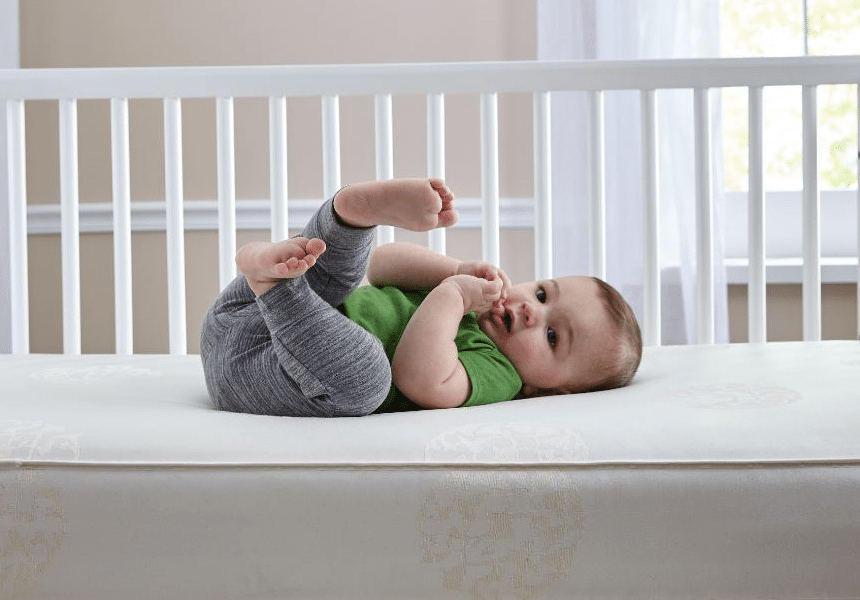
Look for a waterproof mattress pad that will protect your mattress from stains and diaper leaks.
Crib sheets come in different colors and designs so you can choose your favorite one. You will even find a pack of sheets in the same color and others in various colors when buying the sets of crib sheets you need.
This will depend on a variety of factors which we have already covered so you can decide on the right number for your baby. First being how often you will be changing them. A minimum of 4 sheets is ideal for daily change while two will be enough for weekly change.
Having read through our guide, you should have no problem determining how many sets of crib sheets you need and the features to look for before buying one to optimize your baby’s safety and comfort.
